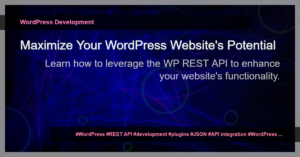Using Hypermedia for RESTful APIs
Have you ever encountered RESTful APIs that provide only basic endpoints without any additional information or context? It can be frustrating to rely on hardcoded URLs and limited documentation when trying to consume an API. What if there was a better way to design and implement RESTful APIs that make it easier for clients to interact with and discover the available resources?
Enter hypermedia. Hypermedia is a concept that extends the capabilities of RESTful APIs by including links and additional metadata in the API responses. These links can be used to navigate between resources, discover related endpoints, and provide valuable context to client applications.
By adopting hypermedia in your API design, you can achieve better decoupling between the client and server, improve the discoverability and self-documentation of your API, and enable clients to dynamically navigate through the available resources.
How Does Hypermedia Work?
Hypermedia-driven APIs follow the principles of HATEOAS (Hypermedia as the Engine of Application State), where the response from the server includes links that represent available actions that can be taken by the client. These links are typically represented using hypermedia formats such as HAL, JSON-LD, or Siren.
Let’s take a look at an example to understand how hypermedia works in practice. Consider an API for managing a bookstore:
GET /books/1
Response:
{
"id": 1,
"title": "The Hitchhiker's Guide to the Galaxy",
"author": "Douglas Adams",
"_links": {
"self": {
"href": "/books/1"
},
"collection": {
"href": "/books"
}
}
}
In the above example, the response includes the book details along with two hypermedia links: self and collection. The self link provides the URL for retrieving information about the specific book, while the collection link represents the URL for the entire collection of books.
By including these hypermedia links, clients can easily navigate to related resources without having to rely on hardcoded URLs or prior knowledge of the API structure.
Benefits of Using Hypermedia in RESTful APIs
Increased decoupling: Hypermedia enables clients to navigate through available resources dynamically, reducing the coupling between the client and server. Clients can rely on the links provided in the responses, rather than hardcoding specific URLs.
Improved discoverability: By including hypermedia links in API responses, clients can easily discover related resources and endpoints. This allows for a more intuitive and self-documenting API.
Flexibility and extensibility: Hypermedia formats provide a flexible and extensible means of representing API resources. Additional metadata can be included in the links to provide further context or instructions for clients.
Versioning and evolution: Hypermedia can facilitate the evolution of an API over time. New resources or endpoints can be introduced, and clients can adapt by following the hypermedia links provided in the responses.
Examples of Hypermedia Formats
Several hypermedia formats can be used to implement hypermedia-driven APIs. Here are a few popular formats:
HAL (Hypertext Application Language): HAL is a simple JSON-based hypermedia format that uses links and embedded resources to represent API responses.
JSON-LD (JSON Linked Data): JSON-LD is an extension of JSON that allows for the inclusion of semantic annotations and linkages between resources.
Siren: Siren is another hypermedia format that extends JSON with additional features like actions and embedded entities.
By choosing a hypermedia format that aligns with your API design goals, you can enhance the functionality and discoverability of your RESTful API.
Conclusion
Hypermedia can play a crucial role in designing and implementing RESTful APIs that are more flexible, self-documenting, and easily discoverable. By leveraging hypermedia-driven principles, you can enhance the navigation capabilities of clients, reduce coupling, and facilitate the evolution of your API over time.
Incorporating hypermedia formats like HAL, JSON-LD, or Siren into your Node.js-based RESTful API can provide a seamless experience for client applications and improve the overall developer experience. So consider adopting hypermedia in your API designs to make them more robust and future-proof.
Happy coding!

